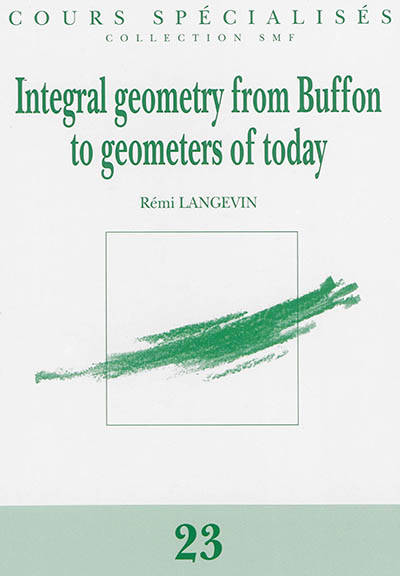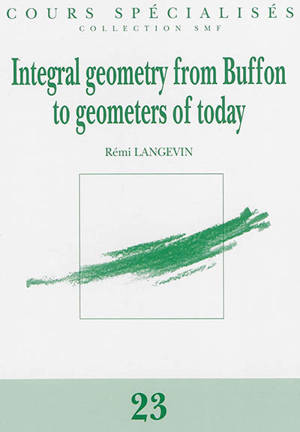
- Retrait gratuit dans votre magasin Club
- 7.000.000 titres dans notre catalogue
- Payer en toute sécurité
- Toujours un magasin près de chez vous
- Retrait gratuit dans votre magasin Club
- 7.000.0000 titres dans notre catalogue
- Payer en toute sécurité
- Toujours un magasin près de chez vous
Description
Integral geometry from Buffon to geometers of today
Integral geometry, also called theory of geométrie probabilities, followed during more than two centuries the development of probability, measure theory and geometry.
The birthdate of integral geometry is for us the publication of Buffon's « traité d'arithmétique morale » in 1777. It is only almost a century later that Crofton will explicit what is a measure on a continuous set like the set of lines of the plane. The meaning of Cauchy-Crofton formula : « the length of a plane curve is proportional to the weighted measure of the set of lines intersecting it », is now clear.
At the beginning of the twentieth century, integral geometry considers shapes. Minkowski, in 1901, found the first relation between a curvature integral on the boundary (...) of a convex body (...), and the measure of the planes intersecting (...). Steiner, Blaschke, Chern and Santalô provided many results about curves and surfaces in the same spirit.
Topology played a role mainly during the second half of twentieth century. A seminal example is Fenchel's statement: the total curvature of a closed curve embedded in Euclidean space (...)3 is larger than 2(...). Moreover, we know now that, if the curve is knotted, the total curvature is larger than 4(...), showing that « more complicated topology demands more complicated geometry ». We will present many more examples, in Euclidean space or in space-forms.
Complex curves, foliations of space-forms, also provide results of the same type.
Until now, we considered ambient spaces endowed with a Riemannian metric. The geometry of the curves, surfaces or foliation was observed locally via curvature functions. Conformal geometry behaves differently: we will often need to involve the local geometry of pairs of points. The counterpart will be measured observing the relative position of curves or surfaces in (...)3 with spheres. The non-compacity of the set of 2-spheres of (...)3 also contributes to change the rules of the game. We will describe the first results obtained in this direction.
Les avis
Nous publions uniquement les avis qui respectent les conditions requises. Consultez nos conditions pour les avis.







